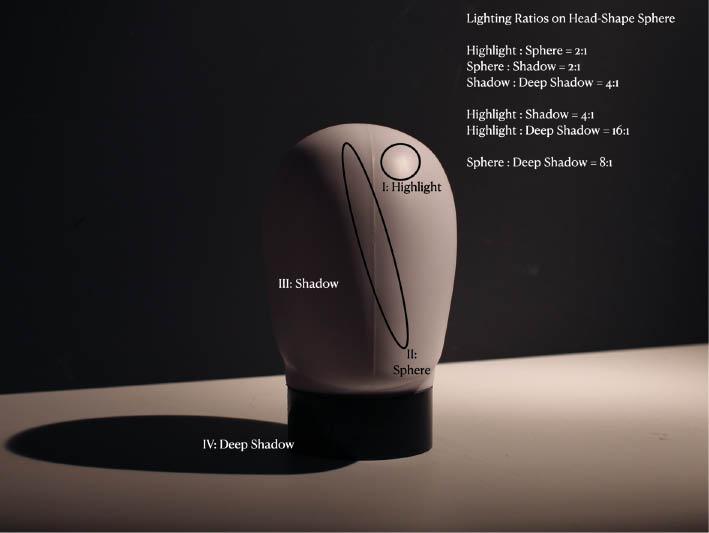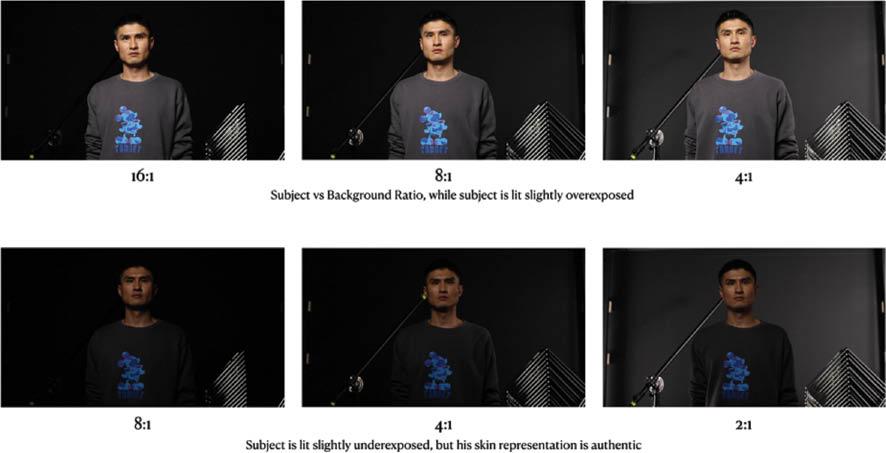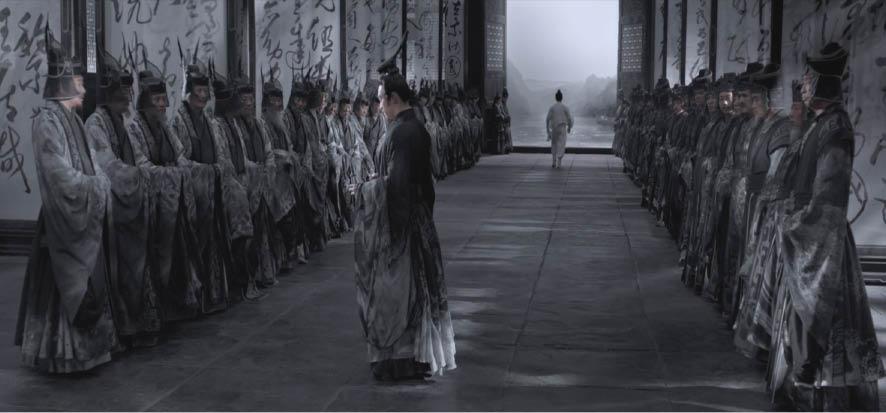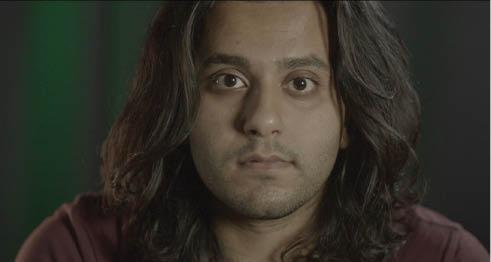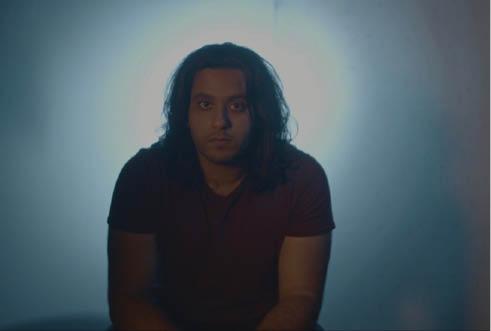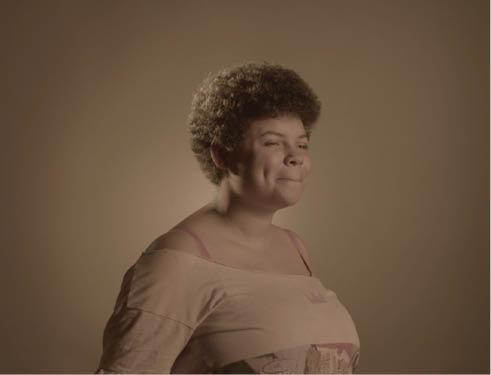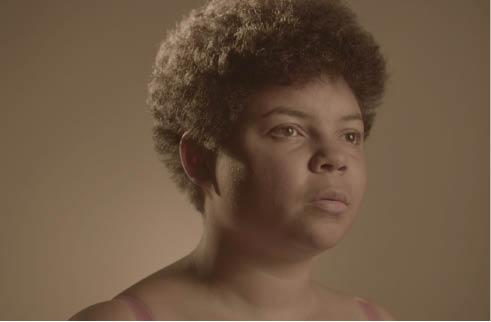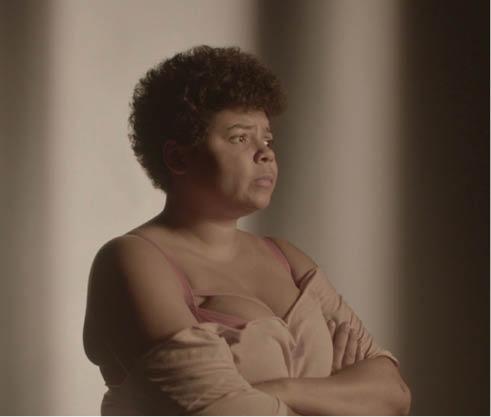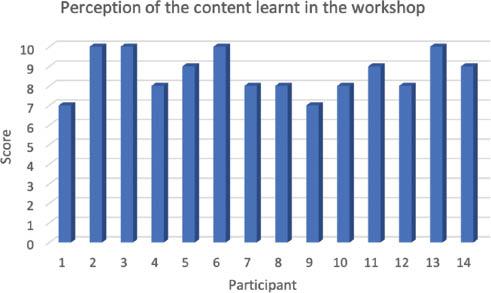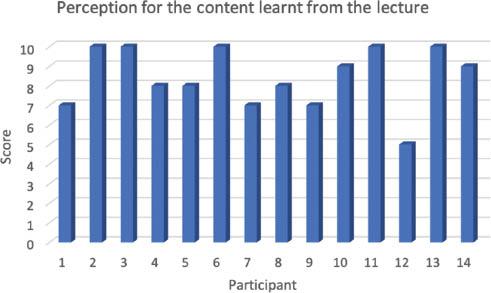Introduction
Decolonising canonical curricula is undoubtedly a painstaking task. Critical self-reflections on histories and precedents, and genuine sympathy for neglected voices, do not, in my experience, necessarily occur in many research and teaching practices. Questioning notions of hegemony in world cinema studies, film scholars have recognised that the investigation of film arts, including consumption and production, should not be restricted to narrow viewpoints, but should seek to extend them (Bâ and Higbee, 2012: xiv). And yet, as a discipline, film studies does not necessarily pave an easy way for the decolonisation of the film curriculum. Lindiwe Dovey (2020), a specialist on sub-Saharan African cinema, discusses how she was challenged by her students regarding what films should be screened and discussed in curricular settings, her students believing that there was no need to re-empower dominant cinematic discourses. Dovey subsequently endeavoured to adapt and shift her pedagogical focus, taking on board feedback from students with different perspectives, which inspired her to open up her lecture room. She suggests that educators can work as ‘storytellers and curators, as individuals with a particular positioning, lived experience and story, rather than as experts’ (Dovey, 2020: 17). Here it is clear that one of the benefits of inviting students to critique the syllabus is to inspire young people to believe in the possibility of finding decolonisation solutions along with the lecturer.
Discussing the 20-minute video titled Why is My Curriculum White? by UCL (University College London, UK) students, Michael Adrian Peters (2018) has noticed similar issues, outlining the reasons why some subjects, such as philosophy, can be colour-blind. He advocates the reform of Eurocentric curricula, in order to enrich narrative and intellectual rigour in a highly selective knowledge-producing sector (Peters, 2018: 265). We are yet to see sufficient response to such questions from certain areas in film education, notably in cinematography, a delay that I argue is caused by certain ingrained attitudes.
From my perspective, these ingrained attitudes are related to two genuinely positive drivers which between them serve as the motor advancing many developments in cinematography: a dedication to virtuosity in operating technologies, and a pride in combining aesthetics and craftmanship for tailored approaches. As I will argue, this attitude bolsters the notion that cinematography is exempt from colonial and racial problematics. If cinematographers design and modify their approaches for each actor and project to ensure the most suitable lighting and camerawork, some might argue, prejudices and presumptions should play less of a role in the images they make. Rather, the scientific and technical nature of cinematography, such as the photochemical reactions of film stock and the development of celluloid technology, may well disguise racial biases, as the evolution of filmic techniques catered to effectively representing ‘shades of white: the skin colour that dominated the Hollywood film screen’ (Goldman and Proctor, 2018: n.p.). In this respect, it can be harder to detect and unravel what is privileged without an intentional effort of ‘cognitive equity’ (Roth, 2009: 128).
Fortunately, an increasing number of practitioners and researchers are beginning to explore these issues, some of whom have contrived ingenious techniques to represent Black actors, not only in lighting, but also in colour grading (Hurlbut Academy, 2021). As a cinematographer myself, I appreciate this level of creativity in exploring the modern technological potential for optimising screen representations for ethnic minority groups. The gaffer (chief lighting technician) has thousands of options for adjusting light colours by operating colour wheels in an app, colourists can tweak endless visual looks with affordable software, and so on. While this progress is welcome, the speed and the scale of change arguably must be accelerated and multiplied. The relative lack of any systematic evaluation of the work of contemporary cinematographers globally means that most cinematographers still adhere to ideas within Eurocentric curricula as mandatory basics, while more regionally specific aesthetics are less established and organised as pedagogical subjects.
In a previous article discussing lighting strategies, I made connections between the lighting practices for Black and Asian actors, to demonstrate the necessity of creating images that do not simply respond to the exposure indicated by traditional light meter reading, which in itself is biased towards White skin tone as a reference (Sung, 2020). The present article discusses another common practice in cinematography education, the study of paintings. It explores possibilities for the development of cinematographic pedagogy, particularly for understanding art produced by Black, Asian and minority ethnic communities. In evaluating the relationship between cinematography and specific Eurocentric painting traditions within the Renaissance, I will examine lighting ratio and texture, and their mutual affinities. After establishing the shared functions of lighting ratio and texture in cinematography, two examples from outside these traditions will be contextualised in order to suggest a way of approaching Chinese and Black artwork as inspiration for visual aesthetics. Following this, I outline my pedagogical approach to lighting workshops for students, drawing upon the ideas discussed in this essay. Finally, the findings from these workshops will be discussed, accompanied by an analysis of students’ responses to their experiences.
What can be found in the cliché ‘painting with light’?
The metaphor of ‘painting with light’, the title of a 1949 book by John Alton, sticks in the imaginations of film practitioners and researchers, as well as in the mind of the public, when thinking about cinematography. The ubiquity of this metaphor is perhaps in part because a great deal of research has been dedicated to the aesthetic relationship between the two, particularly that undertaken in studies of French film (Guillemet, 2008), as part of a familiar process of attempting to legitimate the newer medium of cinema through reference to more traditionally established art forms. Such testimonies, reiterated and amplified by industry cinematographers, claim that the highest standard they are committed to achieve is ‘every frame a Rembrandt’ (Laszlo, 2000: xv). Patrick Keating (2017) compares three acclaimed cinematographers, and articulates how their aesthetic beliefs influence their views on painting and their relationships with film. Insisting on a naturalistic approach, like oil painters, the Spanish director of photography Néstor Almendros (Days of Heaven [Terrence Malick, 1978]) believes good cinematographers should possess the expertise to observe the subtlety of colours and the reflectance of objects in natural light conditions, before creating authentic nuance. Keating (2017) also considers the belief of the Italian cinematographer Vittorio Storaro (who oversaw the photography on many of the films of Bernardo Bertolucci) that painted light and shadow on canvases is more inclined towards writing – annotating meanings and metaphors from a very Cartesian world view. Considering the approaches of such seminal practitioners (particularly Storaro), it is clear that a strict and simplistic analogy between painting and cinematography is not able to encompass the complexities of the two aesthetics, even if light is identified as a shared focus. Jacques Aumont (2007) points out that a simplistic equivalence is a dangerous trap for cinema and film studies, and instead that researchers should utilise this comparison to further unfold their respective heterogeneity and phenomenological singularity.
In order to challenge the lack of racial diversity in Western painting that contributes to ongoing bias in cinematography education, I seek here to carefully analyse the role that lighting ratio plays when painters and film-makers alike create images. In doing so, I consider another visual design principle – texture – and explore how the two may further our understandings of the differences in cinematic expressions between cultures. Supported by the analysis of examples such as the Chinese film Shadow (2018), directed by Zhang Yimou, and the work of Black artist Lynette Yiadom-Boakye, I argue, first, for the necessity of questioning cinematography education through a decolonising lens, and, second, suggest how we might achieve this when teaching students to broaden their horizons and visual references in their practical film-making work.
Painting and lighting ratio
Lighting ratio is defined by measuring the relative difference in brightness between two parts of a lit scene to determine the f-stop: the corresponding number labelled on the lens barrel for indicating the diameter of the iris. In precisely controlling the ratio of two designated parts of a scene, for example, the foreground in relation to the background, or the key-light side in relation to the fill-light side of a subject, cinematographers can potentially create a range of contrasts within a scene for viewers to perceive (Figure 1). This visual experience engendered by the differences in brightness is vital, and the skilful control of lighting ratio can engender significant expressive affect.
In technical terms, lighting ratio is an essential factor to consider when photographing moving pictures, as different final display conditions may affect image quality. For instance, the finest traditional television screen can display a ratio of 32:1 (5-stop brightness difference from black to white), whereas cinema screen projection can comfortably show the maximum brightness ratio of 128:1 (7-stop brightness difference). In this respect, overlooking lighting ratio may mean losing pictorial details from image acquisition to exhibition, as the medium may not accurately represent the nuances and shades of colours.
Aesthetically, ratio can be translated visually into the contrast of tones, and it has conventional functions in imagery creation (see Figure 2). For instance a ratio of 2:1 is desirable for a face appearing young and flattering, whereas in a thriller, a ratio of 8:1 on the leading actor places emphasis upon the lines of shadows, resulting in stronger facial features (Wheeler, 2005). In describing a similar concept through different terminology to capturing the physical character in the relationship between light and shadow, Herbert Zettl (2011: 25) uses the notion of ‘falloff’ to describe the rate of change from bright to dark, regarding this as one of the basic applied media aesthetics in which film-makers are trained in order to make educated judgements within their work. The comparison between the brighter side and the darker side is also the ratio that creates different emotional and aesthetic connotations for storytelling in moving images.
The same psychological effect can be applied to a wider context, such as sets and stages. High-key lighting is generally achieved by overall lighter and brighter tones in the frame, whereby all visual elements share a close tonal affinity and, as such, a smaller ratio. In contrast, low-key lighting establishes a darker ambience with high contrast, and, as such, possesses a bigger ratio. From small details in an actor’s face to wider spaces in the frame, ratio has been understood and utilised by film-makers with great subtlety to create a viewing experience with emotional connotations (see Figure 3). With regard to filmic genres, ratio plays a direct role in establishing expectations when watching a film, and ‘the greater the contrast in a visual component, the more the visual intensity of the picture increases’ (Block, 2021: 13).
Lighting ratio is also a significant consideration when cinematographers want to create a sense of depth in a framed space that will be projected on to a flat screen. As Benjamin Bergery (2002: 15), following cinematographer Stephen H. Burum, summarises:
The second thing you do in lighting is to create separation. Photography looks at the world with only one lens and you need to introduce a three-dimensional quality to this two-dimensional image. There’s only one way to accomplish it: creating areas of light against dark, or dark against light.
An emphasis on space and horizontal depth is shared by both Western painting and film-making, both employing the principles of focal perspective, normatively adopting viewpoints in which the vanishing lines converge. The viewpoint implies the existence of a beholder, the painter or the film-maker, an ‘invisible observer’ (Zhen, 1994: 64) through which an aesthetic principle triumphed and developed into a realistic style since the fifteenth century, when the Renaissance spread rapidly. In these terms, it is not surprising that when cinematographers are asked to give exemplary paintings for learning lighting, they usually cite Renaissance work such as Rembrandt’s The Night Watch (Figure 4, 1642) and Caravaggio’s The Calling of Saint Matthew (Figure 5, 1599–1600). Given that artists have been exploring the visual portrayal of human stories through painting for many centuries, it would seem unsurprising that it is frequently drawn upon by cinematographers when seeking to ‘illuminate the subject so as to make the most powerfully expressive picture’ (Hockney and Gayford, 2020: 35). Nonetheless, this belief only further reminds us of the urgent necessity to question the way in which cinematography is taught and learnt as the range of visual references in this respect tends to be alarmingly limited, while students are not easily able to find Black and Asian subjects.
Texture, lighting ratio and decolonisation through Asian and Black artworks
Predominantly, research and textbooks focusing on cinematography are still notably Eurocentric, whereas film aesthetic theorists from Indian, Middle Eastern and African traditions are not widely known or read. In the anthology Cinematic Landscapes (Ehrlich and Desser, 1994), the influences of Chinese and Japanese art on films are discussed, and the authors also compare the aesthetic differences between the Renaissance system and Chinese and Japanese art traditions. However, researchers have noticed that the focus of such analysis is almost always on those Chinese traditions that ‘differ overtly from those of Western realism’ (Rodrigues, 1998: 73). Bollywood, Nollywood and film industries in South Korea and China, for instance, have unique models and traditions, and their influences on the Western world are clear. However, up-to-date discussions of the role played by film-making practices and ideas in this respect are still lacking.
Seeking to address this gap, Wu Guanping of the Beijing Film Academy states that sociological and economic forces, derived from global markets and connections, have fostered a new creative class that has played a significant part in shaping more recent (post-1990s) Chinese film aesthetics (Wu, 2020). While Wu’s data demonstrate a convincing trend regarding the influence of capitalism upon audiences and Chinese film communities, no link is discussed concerning filmic forms and cinematography techniques from the perspective of a possible reciprocal influence between the West and the East. A pertinent example in this respect is Zhang Yimou’s Shadow (2018), a film that has received global recognition for its achievements in cinematography, and which exemplifies how the influence of Chinese ink-brush painting texture might be articulated through a combination of a film’s art direction, cinematography, production design, costume, colour grading and so on. Through a consideration of Shadow, I here suggest that contemporary cinematographers can emphasise aspects of texture in order to enrich the relationship between painting and cinematography, while looking beyond the lack of examples for lighting non-White subjects. By integrating textures into existing approaches to film education, students can be given the opportunity to appreciate and respond to aspects of cinema and artwork outside canonical references, in a manner that can serve to encourage greater reflection upon the decolonisation of the cinematography curriculum.
Texture, a visual design principle that usually requires lighting to accentuate its physicality, provides perceptual clues that can reinforce a sense of depth; perceived visual associations from looking at texture are usually based on our understanding of physical objects, and are also influenced by cultural factors (Brown, 2016). Although the factors in question have not yet explicitly been explained in the accompanying literature, texture certainly plays an important role in cinematography. Manipulating lights, lighting ratio and texture can help achieve a sense of depth on a flat screen, and a sense of space. If one can see greater details of an object, it appears closer and can convey more visual associations, which can then assist film-makers in adding layers to their visual storytelling. In exploring the relationship between painting and lighting with texture, and how digital cinematography can take advantage of certain inherent elements in the recording apparatus, such as the data properties generated from a camera’s sensor, Rolf Coulanges BVK (German Society of Cinematographers) (2020: 9) states that texture should be regarded as ‘an integral and sensitive element of the image design’, and that cinematographers should utilise it for opening up our perspective of cinematic creativity. According to Coulanges’s (2020) research, European painters such as Vincent van Gogh and Claude Monet are exemplary in demonstrating inspirations such as colourfulness and haptic surfaces. Looking beyond Eurocentric traditions in order to focus upon the textures perceived and created within a specific culture, I will now examine Shadow and its sophisticated cross-departmental collaborations, which attempt to integrate Chinese aesthetics into mainstream filmic expressions.
Shadow was directed by critically acclaimed Chinese film-maker Zhang Yimou, who himself started his career as a cinematographer. Discussing the narrative role of colour, Huaguo Cui and Jang Dong-yeu (2018) use Shadow as an example of how film-makers have drawn upon Chinese ink-brush painting style through abandoning exaggerated colour design to instead deploy sophisticated tonal control on screen. The result, which implies aspects of an ink-staining effect in its framing, demonstrates how a grey-scale colour palette can support narrative, and harmonise Western and Eastern aesthetics (Cui and Jang, 2018). Nick Newman from The Film Stage blog interviewed Shadow’s cinematographer, Zhao Xiaoding, who recounted his collaboration with Zhang and the team:
During pre-production, there was quite a bit of discussion, because we had a good script, as to what the color palette should be. Once Zhang decided he was going to make a motion-picture version of a Chinese ink-brush painting, every department worked on every detail from it – from the design of the sets to costumes to props. They were all what you saw on the screen, and there were screens and screens in the palace that were calligraphy on silk – like, waves and waves of them – and the interiors were all black, grey, and white, and so were the costumes, so that what you saw on the screen was actually what we shot in that regard. (Newman, 2019: n.p.)
This emphasis on collaboration demonstrates the importance of coordination between different departments and craft specialisms in order to achieve a distinctive visual aesthetic in cinema. Complementing the function of lighting ratio in aesthetics, texture is produced beyond one specific department, and, as such, offers a useful starting point for analysing how a coherent aesthetic style is produced through cinematography.
Chinese artist Guan Zi carefully analyses the aesthetics of traditional Chinese ink-brush paintings through contemporary interpretations. He suggests that different textures in ink-brush painting caused by the ink quality and the types of paper, together with diverse brushstrokes, can inspire various different sensations in the minds of their beholders (Guan, 2017). Similarly, when we watch Shadow, the sensation of water in all its forms is omnipresent, even on a visibly solid surface.
The visual aesthetic (see Figure 6) comes from the combination of production design, costume, choreography and cinematography, especially lighting and set decor, particularly through the manner in which the wave-like floor texture is accentuated by the lighting direction. Here, the side lighting moulds the surface better and heightens the details. Approaching the blocking of actors in a manner similar to ink-brushes dancing against a whirlpool backdrop, Zhao and the team transform the beauty of calligraphy into striking visuals on screen.
Another example, shot in the palace hall full of silk frames (see Figure 7), demonstrates how lighting plays an important role in casting ripple-like shades on the floor. Here, the stripe-patterned light beam shines from above, accentuating the fluid nature of the calligraphy on the silk frames, as if two characters are wading through a torrential river. In terms of composition, it does not necessarily follow the emphasis upon ‘flatness and expansive scenes’ within traditional Chinese painting aesthetics (Hao, 1994: 52), but it uses light to paint visual texture, derived from the arrangement of elements in the frame, layering a strong sense of depth.
That texture in art can generate psychological sensations in the mind of the beholder is certainly not a novel idea. John Suler (n.d.) states that textures stimulate our sense of touch, which is closely linked to memories learnt from the environment through the fingertips, face and skin. In practice, there are endless variations to manipulate photographed images for creating textures beyond the lighting techniques discussed here, such as directly damaging the celluloid or using filters. Combining light quality and light direction, practitioners can define and refine pictorial quality, and amplify the sense of emotion within a still frame. Suler (n.d.) infers that texture works as a bridge in connecting viewers’ subjective bodily sensations to images, while Elizabeth Reynolds (2009) states that Chinese ink-brush painting tradition attributes different characteristics to each individual line, such as thickness, thinness, dryness or wetness, and the artist demonstrates prowess in utilising brushes to create rhythm and spirit (shen) in portrayed subjects. Considering the physical qualities of images alongside intended psychological responses, I argue that texture in cinematography can be analysed and compared from both Western and Eastern perspectives.
Through the example of Shadow, we understand that texture not only assists in creating a sense of space, as lighting does in paintings, but also in creating emotions that could be culturally interpreted and understood. I will expand this argument to consider the portraits painted by British-Ghanaian artist Lynette Yiadom-Boakye, to explore how texture may be read in the contemporary work of Black artists.
Yiadom-Boakye is best known for her figurative paintings featuring imaginative Black subjects in which she deliberately provides no explicit hints of time and space. In this respect, not only does her work seem to establish a world of mysterious possibilities, but it also encourages viewers to project their interpretations and contemplations. One distinct subject matter in Yiadom-Boakye’s work is Blackness. Writer and critic Hilton Als has written that Yiadom-Boakye is ‘interested in black society, not as it was affected or shaped by the white world, but as it exist[s] unto itself’ (Tate Modern, n.d.). If Blackness in Yiadom-Boakye’s work is not shaped by the White world, I argue that analysing textures and lighting in her paintings is a pertinent angle from which film-makers can explore what can be learnt from non-Eurocentric artwork.
Muted colours dominate Yiadom-Boakye’s compositions; bold, even brutalist, brushstrokes leave a trace of the artist’s energy through movement; subtle hints of the direction and quality of light escape from a timeless, framed world. The eye is drawn to the almost sculpture-like faces that Yiadom-Boakye imagines, because of the tactile tints appearing under their skins.
In most of her work, the textures of skin are created to resonate with other pictorial elements in the frame. For instance, in Mercy Over Matter (2017), the green, red and purple undertones of the male subject’s skin and jacket are shared with the oil-slick surface of the bird’s feather. Here, the most interesting characteristic is the dynamic blending of colours, represented with strong textural lines defining his facial features. As Zadie Smith (2017: n.p.) describes, affirming Yiadom-Boakye’s prowess in utilising formal aesthetics to enrich the meaning in content: ‘he is a black man. He is often thought of as a nothing, a cipher. But he has layers upon layers upon layers.’ Texture that responds to surrounding colours can emphasise the light quality depicted by the artist’s brush, similar to the approach of Director of Photography Ava Berkofsky with the predominantly Black cast of hit HBO series Insecure (2016–21): ‘instead of adding more light, the skin can reflect it’ (Harding, 2017: n.p.). Here, Berkofsky works closely with the art and make-up departments in order to use bounced light to create harmonious tones for her images.
Considering the paintings of Yiadom-Boakye, one key difference with those comprising Eurocentric canons regards the chiaroscuro effect. In Yiadom-Boakye’s work, contrast does not serve as a cue to imply depth, but rather works to remind the viewer of the importance of texture in the artist’s imaginative world. Here, characters whose faces and bodies are usually moulded by shades of skin colour never appear flat visually, even though the light in her paintings is relatively soft and undefined, and the space that Yiadom-Boakye creates lacks a strong indication of horizontal depth. Similar to the way texture is employed in photography, the reason viewers can still perceive characters with what might be considered a sense of psychological temperature in her work is mainly those spontaneous splashes of coloration. While these may seem randomly displayed, they carefully represent the texture of skin in lighting conditions that do not reveal a particular time of day. This, in turn, propels viewers to imagine the details on a human face, including veins, muscle fibres and even subtle thoughts. In cinematography, side lighting or a kicker light is used to outline facial and bodily structures, alongside careful positioning of key light and fill light. In this respect, lighting ‘should be used to sculpt, rather than bleach, an actor’s skin, a technique championed by Charles Mills in Boyz N the Hood in his night-time exterior shots’ (Latif, 2017: n.p.). Yiadom-Boakye similarly uses her brush to attribute ambiguity and nuanced undertones to her paintings – an approach that I argue cinematographers have much to learn from.
I hope that my reflections on texture have served to suggest different ways of looking at a wider range of artwork beyond Eurocentric canons. Following similar approaches, film-makers and film students can explore art that has tended to be excluded from the teaching of cinematography, and share and discuss their own responses to these within the classroom. The following section moves from theoretical discussion to a consideration of practice, seeking to contextualise a series of workshops that I designed to further explore decolonising approaches to the pedagogy of cinematography.
Background and methodology of research workshops
In order to further explore approaches to a more diverse range of skin tones within cinematography, I designed a series of lighting workshops specifically focused upon photographing Black and Asian models. Here, students were tasked with preparing lighting set-ups using the visual references from artwork featuring contemporary Black and Asian subjects.
Before the workshop, I delivered a lecture to students in which I explained the research, and presented a range of portrait photographs and film stills of Black and Asian people for discussion. The goal of this lecture was to ensure that students fully understood how to complete the tasks, and the theoretical purpose behind each exercise: to encourage them to consciously study skin complexions and racial differences. I felt it was important to clarify the research angle prior to the workshop in order to create an open environment. Furthermore, this opportunity could then be used to display and discuss good practice when working with certain lighting set-ups. Another benefit of this lecture was to outline to students the limitations of the research. For instance, we would not be able to include more models with different skin tones, and working in the studio setting was inevitably simpler than filming in the real world, with multiple colours and shapes in the background. Finally, I should emphasise that in the following discussion, the terms ‘Black’ and ‘Asian’ do not represent the full spectrum of real skin complexion. They indicate only to which model from the workshop I am referring.
Students were divided into four three-person groups. Two groups worked with the Black model, two with the Asian model. All groups were given the same amount of time to complete two types of medium shots and two types of close-up shots.
In the medium shots, students lit the model and the space in the frame in order to generate two emotional connotations: one cheerful, the other anxious. The model would smile in the cheerful shot, and frown in the anxious one. Students decided how to use brightness differences between the model and the background in order to achieve the desired emotion; they also needed to control the lighting ratio to create texture and depth.
In the close-ups, the models were asked to keep a neutral facial expression, but students were tasked with lighting for two emotional moods: again, cheerful and anxious. This time, as the size of the frame was smaller, the background would not have an impact visually, but, on the contrary, the students were required to photograph the face in detail, with lighting ratio and texture in mind.
During the debriefing, each student was given a questionnaire that helped me understand their subjective experience during the workshop, lecture and preparation prior to the day. To maintain anonymity, student respondents are here referred to by the number assigned to them according to the order they returned their questionnaires on the day. This procedure was done on a voluntary basis, and students could choose not to complete the questionnaire if they wished.
In reflecting upon teaching diversity in cinematography, cinematographer and educator Cathy Greenhalgh (2020: 3) advocates interrogating the status quo by testing ideas in practice situations – ‘filmmaking as praxis’. She encourages her students to recreate images in the studio referencing the classic paintings displayed in the National Gallery in London. By lighting faces with student stand-ins from different countries, her teaching exercise offered opportunities to question traditional approaches. My enquiry into cinematography pedagogy adopts aspects of this format, while emphasising a consideration of artwork featuring Asian and Black subjects.
In what follows, there are three aspects of analysis: first, my observations of the students’ work and their activities while completing the tasks in the studio; second, quantitative feedback from the questionnaires; third, the more qualitative free-text responses relating their impressions, acquired from the questionnaires.
In order to evaluate how students perceived learning activities, I utilised a 1 to 10 scale to quantify the perception of student experience. If participants responded extremely negatively, they could choose a score of 1; extremely positively, a score of 10. Furthermore, students were asked to articulate their reflection in free-text responses. The questions can be found in Box 1.
Questionnaire
1. From 1 to 10, could you please leave a score for the content learnt in the workshop. 1 means extremely negative, and 10 means extremely positive.
___________________________
2. From 1 to 10, could you please leave a score for the content learnt from the lecture. 1 means extremely negative, and 10 means extremely positive.
___________________________
3. From 1 to 10, could you please leave a score for the benefit of learning from artwork produced by Black and Asian artists. 1 means extremely negative, and 10 means extremely positive.
___________________________
If possible, could you please give us some examples:
___________________________
Last question, could you please tell us what has struck you the most in this topic: Decolonisation of Film Curriculum:
___________________________
It is noteworthy that not all my student groups completed all four tasks. Two groups worked on close-up shots first, and did not manage to tackle medium shots within the allocated time slot. The differences in competency and professional conduct among the groups was noticeable, as will be discussed in the following section.
Workshop observations
Before the models arrived, students followed their lighting plans to arrange the equipment in studios; for instance, the positions of the key light, fill light and back light were considered, as well as the background curtain colour against which they intended to work (students had a choice of black, white or grey).
Once the model was seated, students began making adjustments according to the framing and the model’s physique (height, body type and natural sitting posture). All groups, with the Black and Asian models present, immediately decided to change the position of their key light. The iterations of photographing models among the four groups were similar, whereby they experimented with colours, light positions and the exposure level in order to optimise their skin tone representations. Students endeavoured to materialise their planning with the physical presence of models. The final outcomes of their work are demonstrated in Figures 8–18, in the order of their completion time.
One student led Group 1, and took the lead in operating lights and accessories, whereas the others followed his ideas and direction, and implemented minor changes. In general, they decided the overall tones swiftly in both medium shots, but when they proceeded to the close-up, their original planning did not work with the model, as the key light cast shadow through his hair. After shifting the key light position, they then considered certain colours to be suitable for the emotional connotation. The first work (see Figure 8) was not completed in compliance with the brief, in that the model should have given a smile to create a cheerful mood. In Figure 9, the green light for the background has heavy associations with the horror genre, and additionally spilled to the foreground and affected the skin representation of the model. Students then changed colours, trying out an orange gel instead. However, in the end, the group still opted for the green colour, while moderating the lighting output to make it less impactful to the whole frame.
Figure 10, the medium shot with anxious mood, has less differentiation with regard to the lighting ratios among the subject, background and the detailed areas in the frame. It could be that the students did not have enough time to fully execute their planning, and, as such, were only able to complete the main colour palette for the shot, without working on further details.
Group 2 proceeded to undertake their lighting set-ups with sufficient preparation, as they had drawn bird’s-eye view lighting plans and made reference to other film stills and photographs prior to the workshop. The dynamic in the group was different from Group 1 in that they engaged with all opinions from members in the group. While this did not serve to accelerate their activities, students were open to experiment with a wider range of lighting colour gels. For instance, in the initial lecture, I had explained my own exploration of the LEE Filters Cosmetic Diffusion series, particularly for magenta colours. Following this, students taped the 184 Cosmetic Peach with the 187 Cosmetic Silver Rose to serve as extra diffusion papers with colour moderation for the key light in Figure 11. The influence is not perceivable after the Look-Up-Table (LUT) colour grading process, as I only applied the Rec-709 LUT, the most common colour space in digital display devices, to the ungraded footage. With a more targeted grading, the colour caused by a light modifier should manifest more clearly. Nonetheless, students were satisfied when they saw the end result, as they believed that the diffusion gel 187 Cosmetic Silver Rose enhanced the skin undertone of the model.
When working on the image in Figure 12, Group 2 contemplated their visual reference while experimenting with a complementary colour palette. The final image presents a good range of lighting ratios, particularly on the face, and the soft background with gradual blue and red light brightness. The group also controlled colours from two sides in order to maintain an authentic skin tone in the centre of the model’s face.
As Group 3 had fewer members (due to the fact that some were not well enough to attend), they only completed two close-up shots with simpler lighting designs. That said, they were the only group to actively evaluate the imagery exposure via false colour, a display function providing IRE (Institute of Radio Engineers) values to indicate the video signal according to the light reflectance. Cinematographers utilise false colour or other indicators for IRE values to judge whether their lights provide sufficient brightness in relation to the middle grey (18 per cent reflectance). As such, IRE plays an important role in digital cinematography, especially for ensuring that images are correctly exposed. Comparing the two close-ups produced by Group 3, the difference mainly resides in the lighting ratio between the key light and the fill light. This group had a clear intention to examine the aesthetic perception of lighting ratio in traditional lighting methods. In order to further define and differentiate the moods of the images, they positioned the kicker light differently for the model’s hair, and her shoulders. In Figure 13, the details of the model’s hair was evenly outlined with a weaker kicker orange light, from the right of the frame at her eye level, and the frontal key light, which resulted in a lighting ratio of 2:1 for her portrait. Wheeler (2005) states that this ratio is generally desirable for creating a younger and flattering face. Overall, the model’s portrait appeared calm and peaceful, and her smile helped to establish a subtle cheerful mood in this neutral setting. On the contrary, in Figure 14, the stronger kicker light from a high angle at the left of the frame produced harsher shadows on her shoulder, which also made the texture of her hair prominent. The shadows on the darker side of her face, and the distinctively brighter lining on her shoulders, both contributed to the ominous appearance of this portrait.
Finally, Group 4 was the only group to complete all tasks as a team. One member had gained experience and knowledge in lighting from his previous education, and the rest of the team supported him effectively. They used a big diffused light source as key light, and created a distinct background pattern to define the moods (cheerful or anxious). However, the exposure of four images was nearly one stop exposure over (meaning the group should have closed the lens aperture further in order to have less light received by the camera sensor). The over-exposure did not cause a major issue, as information was sufficiently recorded by the high dynamic range sensor. However, the model loses the caramel skin colour under the strong and directional light. With Rec 709 LUT applied in colour grading, the skin colour was restored, but there was less room to adjust for imagery details.
As this case study has illustrated, students have different levels of proficiency in operating lights and accessories and, as a result, research met with certain obstacles when gathering data. Some groups did not complete all of the four tasks, and a comparison of more of their work would have been more fruitful. Further, some groups did not follow the brief thoroughly, so models changed their expression when this was not required.
Student perceptions of learning activities
The responses to the questionnaires suggest that a notable number of student respondents thought that both the workshop and the lecture were helpful. The average score for the content learnt in the workshop was 8.64 out of 10; for the content learnt from the lecture, 8.42; and the benefit of learning from artworks produced by Black and Asian artists, 9.35. It would thus seem evident that participants appreciated the learning activities, particularly the way in which they were encouraged to decide what artworks they could intellectually and practically engage with when seeking visual references. Three column charts are shown in Figures 19–21.
Nearly three-quarters of participants (71 per cent) utilised the survey’s free-text section to provide feedback, and many left lengthy entries giving insight into their experiences. Answers were categorised into three themes: the importance of learning decolonisation in cinematography education; beneficial pedagogical elements related to their learning; and further comments on specific lighting techniques.
Responses suggest that students appreciated the timely engagement with efforts to decolonise film curricula:
Most content taught currently is based on research & paper[s] written by white people about white people. The western standards of ‘beauty’ revolve around ‘whiteness’ and are outdated. The importance of ‘decolonizing’ the industry as a whole should be emphasised, and most start from the root-education. (Respondent 14)
I found this topic very interesting and important because I believe that Black and Asian skin tones can often be neglected in film when focusing on lighting and complementing the skin tone. (Respondent 8)
I must confess that I have never really come across Asian movies. I plan to watch a lot of them in the future. (Respondent 7)
The first comment alludes to the fundamental challenge of decolonising cinematography education, in that the relevant literature is yet to be systematically organised, let alone disseminated in academia. In cinematography training, students need to be exposed to a broader range of films, artworks and bodies of knowledge on various art traditions, considering that they may not be able to source films produced across the world in their own time. I argue that this gap should be considered as a key priority to address across the higher education sector.
Respondents recognised the valuable benefits derived from foregrounding diversity in cinematography training:
I researched South Asian films and found many interesting things that I’ll carry with me as my development as a cinematographer. (Respondent 10)
Beneficial information when working with certain actors. (Respondent 2)
Being able to practise with different skin tones and to visually see how the lights can affect the outcome. (Respondent 8)
The difference between lighting different skin tones in general, as somehow I never realised that before. Furthermore it makes me think how to light a space with both white and black skin-toned actors, being in the same shot, as adjusting light for one individual was really interesting and challenging, but for two different ones would be a next level. (Respondent 5)
The last comment hints at the pressing motivations underlying my research, as film-making students, regardless of their backgrounds and heritages, are accustomed to learning from seeing and doing. Once they experience the live, in-person situation of working with models with darker skin tones, they realise that more care is required. Combining lectures and workshops is a common teaching practice on a practice-based course. According to the last two responses (Respondents 5 and 8), doing and seeing what their practice could achieve within specific images prompted students to evaluate and identify the effects of their decisions. It is encouraging to notice that students actually want more experience of the same sort of approach. During a subsequent course representative meeting, one student representative pointed out that it was not enough to engage with diversity issues once a semester, and she wanted to see similar attempts being integrated into more modules.
Finally, responding to my lecture (which presented examples from industry practitioners of how they approached skin tone with a non-White cast, and demonstrated a series of concrete, ‘how-to procedures’), students gave the following testimonies:
It was super helpful to learn about technologies for other skin colours that are complementing e.g. kick light to amplify bone structure for darker skin.
How little I had question[ed] the effect of different coloured skin on lighting equipment e.g. gels. (Respondent 4)
The process that previous cinematographers found and shared. The fact that many different cinematographer[s] and photographers have found many different methods that continue to help photographers and light darker skin tones. (Respondent 10)
Respondent 4’s words recall the opening discussion of this article, returning to the shared and basic techniques that constitute the crafts of cinematography. In order to decolonise cinematography education, I argue that it is necessary to first evaluate the implicit racial bias within industry technique, before analysing the bigger issues, such as racism in the industry. In her book Filmer les peaux foncées: Réflexions plurielles (Filming Darker Skins: Plural reflections), gaffer Diarra Sourang (2018: 24) contends that: ‘all steps that reveal the operator’s choices, notably the exposure, are the result of an opinion, a judgement. It is thus at that moment where the notion of racism can appear, whether it is conscious or not’ (my translation). The techniques that we deploy when producing audiovisual content are developed and formed by conventional practices that historically have proven useful. Hence, the judgements and choices we make while utilising these techniques must be examined, instead of challenging technologies and the production pipelines and cultures blindly.
Ultimately, it would seem that texture – as a component of visual aesthetics – requires more guidance and explanation. American educational psychologist Benjamin Bloom (1956) identifies six levels of the cognitive domain in his Taxonomy of Learning Objectives – Knowledge, Comprehension, Application, Analysis, Synthesis and Evaluation. The work of my students discussed here, and their practice, demonstrate that, arguably, they did not yet reach the level of Application. While students may have understood the literal meaning of texture – regarding the textures in the background of images or the fabrics of clothes they wear – they did not challenge this visual element for culturally specific expression in their images. Furthermore, my workshop did not cover colour grading, production design or costume design. Those departments also each have important inputs regarding how texture is created on screen. In future investigations into cinematography pedagogy, it would thus seem necessary to integrate a greater holism of approach, in order to acknowledge and explore the contributions of multiple craft disciplines to the construction of texture in cinema.
Conclusion
Echoing notions of ‘film-making as praxis’ (Greenhalgh, 2020: 3), my students’ work demonstrated the process of testing ideas and inspirations drawn from initial research in practice-based situations. Here, students experimented in a safe, controlled environment with non-White skin tone models, and they were able to question what they had learnt and seen in relevant visual examples and accompanying literatures. The advantages of this exercise seem clear. First, students were allowed to ‘progress from simply holding and finding factual information to being able to apply new knowledge in novel and different ways’ (Coffman, 2009: 1). Second, by seeing the results in real time, more questions were generated, prompting students to evaluate their outcomes through critical thinking and in the spirit of problem solving.
When considering textures, we need to develop new vocabularies to discuss aesthetics across different cultures. From my analyses and discussions, decolonisation in cinematography education proves itself a rich field for educators and students to conduct enquiry-based learning and teaching. Such an endeavour remains very challenging because, when embedding neglected films or practices into canonical curriculum, educators need to take into account how to meet the learning outcomes in their original planning within already limited institutional resources. Needless to say, introducing such ideas and practices into our teaching requires further contextualisation: for instance, how film stocks have been developed historically (and could be developed in future); how local audiences have perceived colours and screen aesthetics on a cultural level; and – from a more sociological perspective – how such factors impact how film industries evolve. Such a project requires significant resources in order to provide students with more than just scattered information, and, in this respect, tutors in higher education will need extra support, both in time and resourcing, to restructure our current pedagogy.
Acknowledgements
The author is grateful for the support from the School of Arts and Creative Industries, London South Bank University, and LEE Filters in my research.
Declarations and conflicts of interest
Research ethics statement
The author declares that research ethics approval for this article was provided by the London South Bank University Arts and Creative Industries Ethics Panel (ACI SEP).
Consent for publication statement
The author declares that research participants’ informed consent to publication of findings – including photos, videos and any personal or identifiable information – was secured prior to publication.
Conflicts of interest statement
The author declares no conflicts of interest with this work. All efforts to sufficiently anonymise the author during peer review of this article have been made. The author declares no further conflicts with this article.
Filmography
Boyz N the Hood (US 1991, John Singleton)
Days of Heaven (US 1978, Terrence Malick)
Insecure (US 2016–21, various)
Shadow (CN 2018, Zhang Yimou)
References
Aumont, J. (2007). L’œil interminable. Paris: SNELA.
Bâ, S; Higbee, W. (2012). Forward In: Bâ, S, Higbee, W W (eds.), De-Westernizing Film Studies. Abingdon: Routledge, pp. 1–16.
Bergery, B. (2002). Reflections: Twenty-one cinematographers at work. Hollywood, CA: ASC Holding Corp.
Block, B. (2021). The Visual Story. New York: Routledge.
Bloom, BS. (1956). Taxonomy of Educational Objectives, Handbook 1: The Cognitive Domain. New York: David McKay.
Brown, B. (2016). Cinematography: Theory and practice. New York: Routledge.
Coffman, T. (2009). Engaging Students Through Inquiry-Oriented Learning and Technology. Lanham, MD: Rowman & Littlefield Education.
Coulanges, R. (2020). Textures from painting to digital images. Cinematography in Progress, : 3. Accessed 11 August 2022 https://www.cinematographyinprogress.com/index.php/cito/article/view/51 .
Cui, H; Jang, D. (2018). The study of traditional color aesthetics in Zhang Yimou’s films – Taking Shadow for example. SSEHR 2018, : 466–8.
Dovey, L. (2020). On teaching and being taught: Reflections on decolonising pedagogy. PARSE 11 : 1–26. Accessed 11 August 2022 https://parsejournal.com/article/on-teaching-and-being-taught/ .
Ehrlich, L, Desser, D D (eds.), . (1994). Cinematic Landscapes: Observations on the visual arts and cinema of China and Japan. Austin: University of Texas Press.
Goldman, R; Proctor, J. (2018). Why does my actor look like that? Teaching inclusive lighting techniques. EDIT Media, November 12 2018 Accessed 30 May 2022 http://www.editmedia.org/2018/11/12/why-does-my-actor-look-like-that-teaching-inclusive-lighting-techniques/ .
Greenhalgh, C. (2020). Skin tone and faces: Cinematography pedagogy which foregrounds inclusivity and diversity in teaching lighting. Cinematography in Progress, : 3. Accessed 11 August 2022 https://www.cinematographyinprogress.com/index.php/cito/article/view/45 .
Guan, Z. (2017). Seven principles of brush-and-ink: The aesthetic principles of brush-and-ink in the field of traditional Chinese landscape painting. Guan Zhi professional website, January 29 2017 Accessed 11 August 2022 https://www.inkgz.com/blog/seven-principles-of-brush-and-ink-the-aesthetic-principles-of-b .
Guillemet, J. (2008). Painting/cinema: A study on saturated phenomena. Film-Philosophy 12 (2) : 131–41, Accessed 25 August 2022 DOI: http://dx.doi.org/10.3366/film.2008.0020
Hao, D. (1994). Chinese visual representation: Painting and cinema In: Ehrlich, L, Desser, D D (eds.), Cinematic Landscapes: Observations on the visual arts and cinema of China and Japan. Austin: University of Texas Press, pp. 45–62.
Harding, X. (2017). Keeping “Insecure” lit: HBO cinematographer Ava Berkofsky on properly lighting black faces. MIC, June 9 2017 Accessed 25 August 2022 https://www.mic.com/articles/184244/keeping-insecure-lit-hbo-cinematographer-ava-berkofsky-on-properly-lighting-black-faces .
Hockney, D; Gayford, M. (2020). A History of Paintings. New York: Thames and Hudson.
Hurlbut Academy. LUTs for dark skin tones, May 2 2021 Accessed 4 May 2021 https://www.hurlbutacademy.com/dark-skin-tone-luts/ .
Keating, P. (2017). What does it mean to say that cinematography is like painting with light? In: Coleman, L, Miyao, D; D and Schaefer, R R (eds.), Transnational Cinematography Studies. London: Lexington, pp. 97–116.
Laszlo, A. (2000). Every Frame a Rembrandt: Art and practice of cinematography. Boston, MA: Focal Press.
Latif, N. (2017). It’s lit! How film finally learned to light black skin. The Guardian, September 21 2017 Accessed 18 February 2022 https://www.theguardian.com/film/2017/sep/21/its-lit-how-film-finally-learned-how-to-light-black-skin .
Newman, N. (2019). “Shadow” cinematographer Zhao Xiaoding on Zhang Yimou’s style and the principle for great action filmmaking. The Film Stage blog, November 18 2019 Accessed 15 August 2021 https://thefilmstage.com/shadow-cinematographer-zhao-xiaoding-on-zhang-yimous-style-and-the-principle-for-great-action-filmmaking/ .
Peters, M. (2018). Why is my curriculum White? A brief genealogy of resistance In: Argay, J, Mirza, H H (eds.), Dismantling Race in Higher Education: Racism, Whiteness and decolonising the academy. London: Palgrave Macmillan, pp. 253–70.
Reynolds, E. (2009). Chinese painting: Philosophy, theory, and the pursuit of cultivation through the Dao. Independent Study Project (ISP) Collection 805 : 1–16. https://digitalcollections.sit.edu/isp_collection/805 .
Rodrigues, H. (1998). Questions of Chinese aesthetics: Film form and narrative space in the cinema of King Hu. Cinema Journal 38 (1) : 73–97, DOI: http://dx.doi.org/10.2307/1225736
Roth, L. (2009). Looking at Shirley, the ultimate norm: Colour balance, image technologies, and cognitive equity. Canadian Journal of Communication 34 : 111–36, DOI: http://dx.doi.org/10.22230/cjc.2009v34n1a2196
Smith, Z. (2017). Lynette Yiadom-Boakye’s imaginary portraits. The New Yorker, June 19 2017 Accessed 20 August 2021 https://www.newyorker.com/magazine/2017/06/19/lynette-yiadom-boakyes-imaginary-portraits .
Sourang, D. (2018). Filmer les peaux foncées: Réflexions plurielles. Paris: L’Harmatan.
Suler, J. (n.d.). Texture in photographs. Photographic Psychology: Image and psyche, Accessed 15 August 2021 http://truecenterpublishing.com/photopsy/texture.htm .
Sung, Y. (2020). Reading the light right: The exposure of Asian skin tones in cinematography. Frames Cinema Journal, : 17. DOI: http://dx.doi.org/10.15664/fcj.v0i17.2075
Tate Modern. An introduction to Lynette Yiadom-Boakye, Accessed 20 August 2021 https://www.tate.org.uk/art/artists/lynette-yiadom-boakye-16784/introduction-lynette-yiadom-boakye .
Wheeler, P. (2005). Practical Cinematography. Boston, MA: Focal Press.
Wu, G. (2020). Changes in contemporary Chinese film aesthetics In: Journal of Beijing Film Academy. Beijing Film Academy Yearbook 2018. Bristol: Intellect, pp. 29–41.
Zettl, H. (2011). Sight Sound Motion: Applied media aesthetics. 6th ed Boston, MA: Wadsworth.
Zhen, N. (1994). Classical Chinese painting and cinematographic signification In: Ehrlich, L, Desser, D D (eds.), Cinematic Landscapes: Observations on the visual arts and cinema of China and Japan. Austin: University of Texas Press, pp. 63–79.


